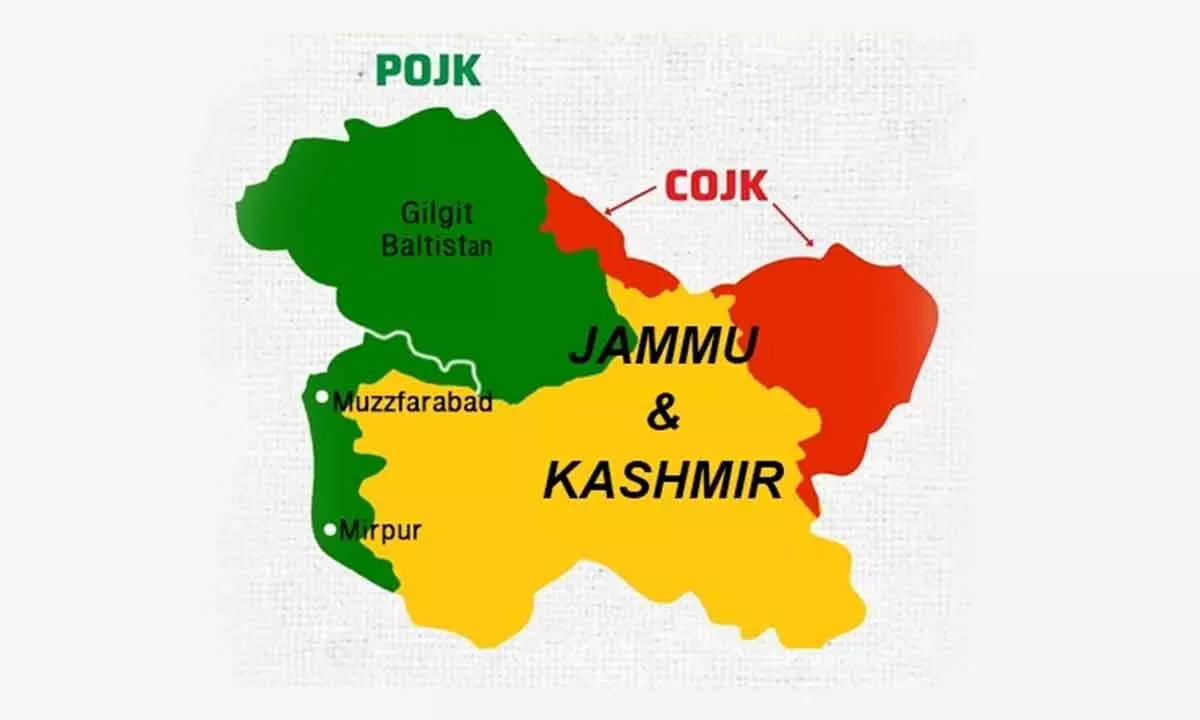Pakistan is living in a fool's paradise
Kashmir was and is a paradise where people of all religions live in harmony and that tradition continues
image for illustrative purpose

Accession Day, October 26, 1947, is celebrated with fervour and graciousness in Jammu and Kashmir, when Maharaja Hari Singh signed the Instrument of Accession at Amar Palace in Jammu, India. The agreement made the former independent princely state of J&K join the Union of India. Maharaja had decided, in April 1947 that he would accede to India if it was not possible to stay independent.
Kashmir was and is a paradise where people of all religions live in harmony and that tradition continues. Pakistan's actions divided the State into Pakistan-Occupied Kashmir and Jammu and Kashmir, a scenario that continues till date.
Kashmiris remember October 22, 1947, as the day of the commencement of hell, till Indian soldiers landed to protect them. October 22, 1947, was when six to seven thousand Pakistani raiders, backed by the Pakistan army, which had embedded some of its soldiers within the raiders, crossed the Neelam River and began looting, plundering, raping, kidnapping and killing thousands of innocents, all with the intention of capturing Kashmir under the code name of Operation Gulmarg. Pakistan's 7 Infantry Division was located close by seeking to exploit the success achieved by its raiders. The target was to capture all territory up to the Banihal Pass.
By the end of the war, over 35,000 Kashmiris from all religions were killed, and thousands were kidnapped and taken to western Pakistan to be sold as slaves.
Pakistan continues to breed terrorist groups which claim innocent lives in Kashmir, and pretext that Kashmiris desire to be a part of Pakistan. It hired anti-national elements with illicit funds to incite violence and turned religion into a dividing factor. But always eat humble pie. Like in Bangladesh in 1971 Pakistan failed miserably and was compelled to surrender before the Indian Army. Pakistan's repeated attempts to secede from Kashmir proved futile exercise because the people of the region understood Pakistan's dirty games.
After accession, the Indian part of J&K followed the democratic path of the Indian constitution while the area under Pakistani occupation was bifurcated into two - PoK and the 'Northern Areas,' known as Gilgit-Baltistan. Pakistan Occupied Kashmir (PoK) is that part of Jammu and Kashmir (India) which was invaded by Pakistan in 1947.
Since 1947 PoK has been governed under the Pok Interim Constitution Act passed in 1974. PoK claims to have a self-governing legislative assembly though it is a known fact that it is under the control of Pakistan.
The leaders of PoK surrendered the Northern Areas to Pakistan under the Karachi Agreement of 1949. The Karachi Agreement, which governs the rule of Pakistan over Gilgit-Baltistan, was signed between the president of PoK, the Muslim Conference, and a minister without portfolio from Pakistan, Mushtaq Ahmed Gurmani.
On 22 October 1947, Pakistan's Pashtun tribal militias crossed the border of the state. It was called Operation Gulmarg and launched on the intervening night of 21-22 October 1947. Over 2,000 Pathan tribesmen first captured the bridge spanning the Kishanganga (Neelam) River on the Hazara Trunk Road linking Muzaffarabad with Abbottabad without a fight. By morning, the first major J&K border town of Muzaffarabad was captured.
The horrors that have been unfolded by a Pakistani journalist from Muzaffarabad, Zahid Chaudhry, in his book has described three days of havoc and the way invaders indulged in killing non-Muslims, looting, plundering, and burning their houses at the behest of officer-in-charge of the attack, Major Khurshid Anwar. Writers and commentators have estimated the number of the Hindus and Sikhs massacred during these three days in Muzaffarabad to be 4500 to 5000, and the number of kidnapped women to be more than 1600.
These local tribal militias and irregular Pakistani forces advanced to take the capital city of Srinagar. But on reaching Baramulla, they again started looting. They were challenged initially by the Jammu and Kashmir State Forces and by militias. It was the daring deed of a 19-year-old boy Mohd Maqbool Sherwani who single-handedly frustrated the advance of thousands of raiders (Kabailis) from Baramulla, thus giving valuable time to the Indian Army to land in Srinagar and push back raiders. The raiders put him on a wooden cross, nailed him, and fired upon 10-15 times. He remained like that for two to three days. His body was brought down only when the Army reached the place.
Indian troops landed in Srinagar on October 27, 1947 and defended the summer capital in the decisive battle of Shalteng on the outskirts of Srinagar on 7-8 November 1947. On the 8th of November 1947 raiders were driven out of Baramulla. One of the first acts of the freed people was to reclaim the dead body of Sherwani and to bury it in the graveyard of Juma Masjid of the town with full military honours. A Memorial hall in the name of Maqbool Sherwani has been constructed by the army. In the next few months, the Indian army drove out the Pakistani intruders from most parts of J&K, barring the portion that today constitutes PoK. The invasion of J&K by Pakistan and its proxy tribal raiders in 1947 has left deep scars that impacted the psyche of the people of POK, and it marked the first and most critical step in the erosion of the Kashmiri identity with the State and its people being torn apart by an UN-drawn LoC that divides the erstwhile Princely State and its inhabitants.

